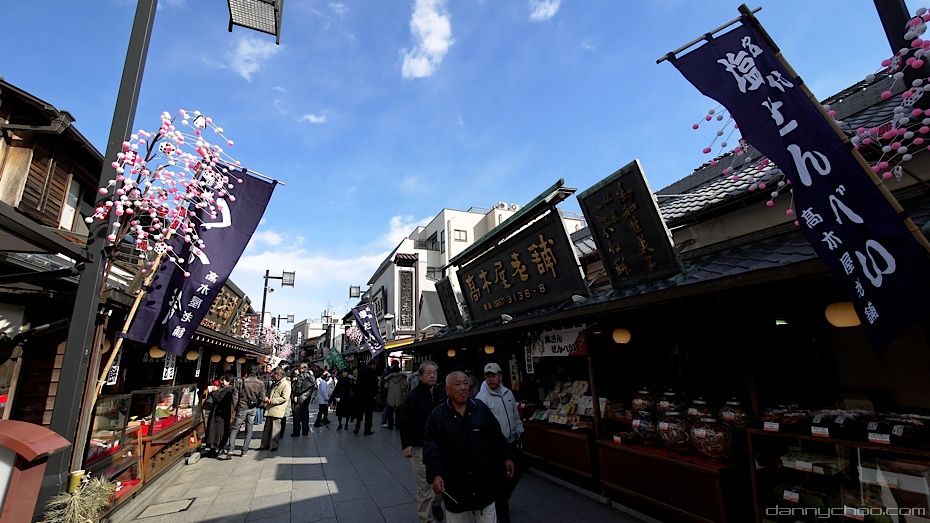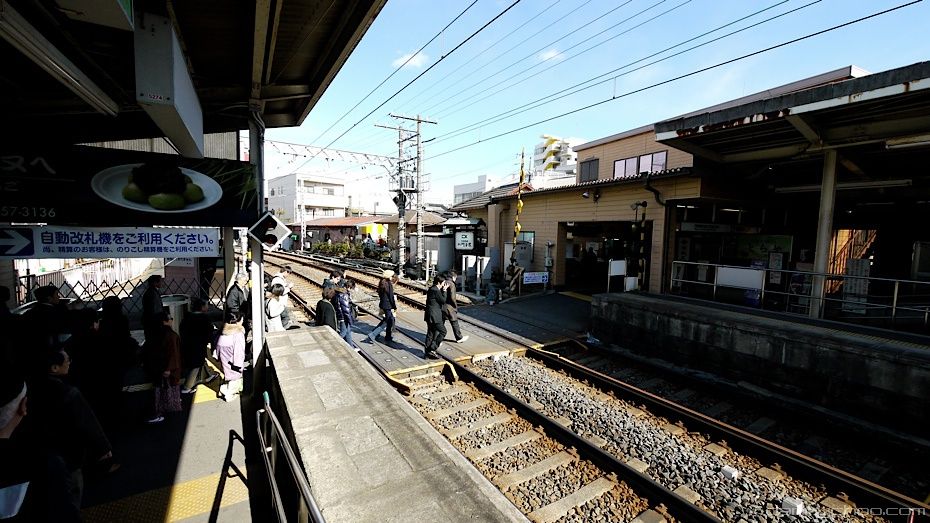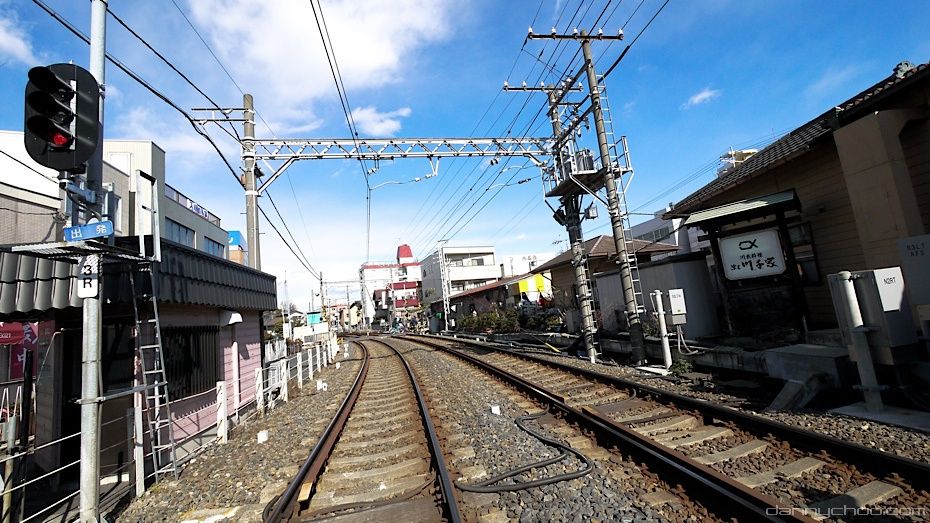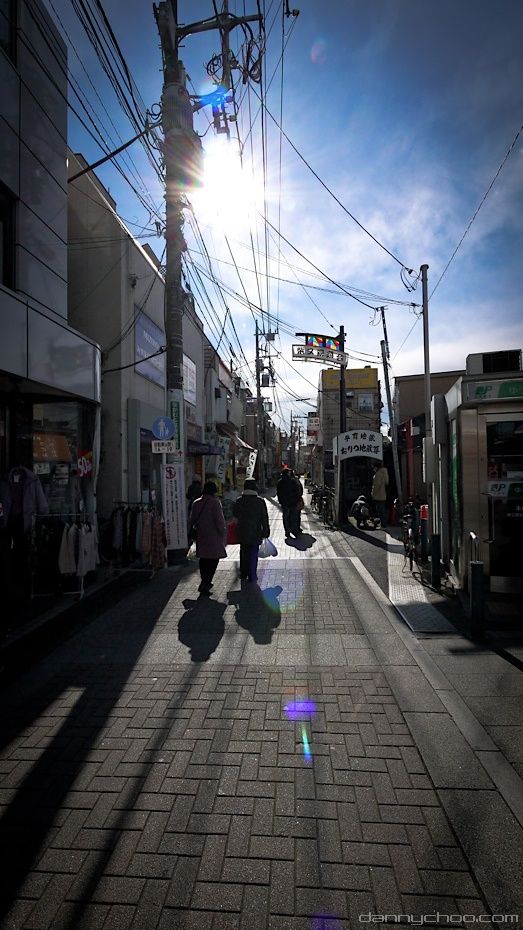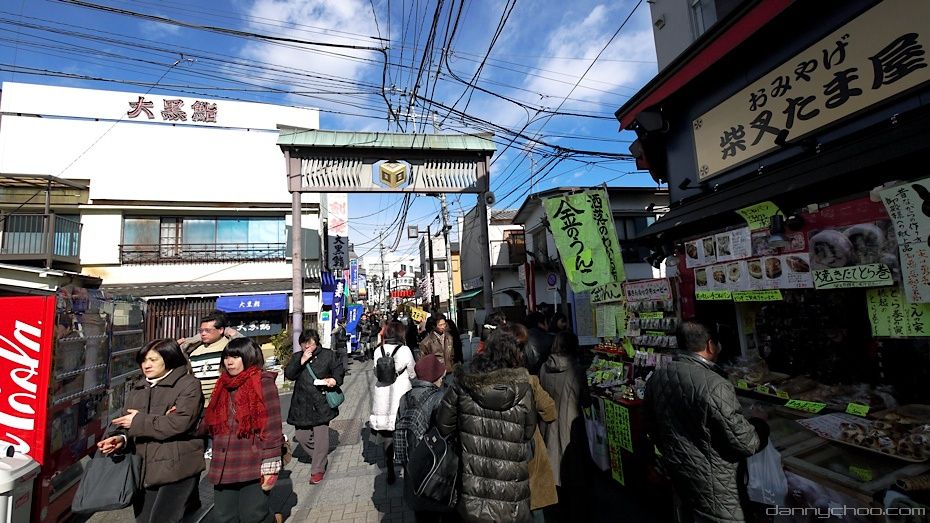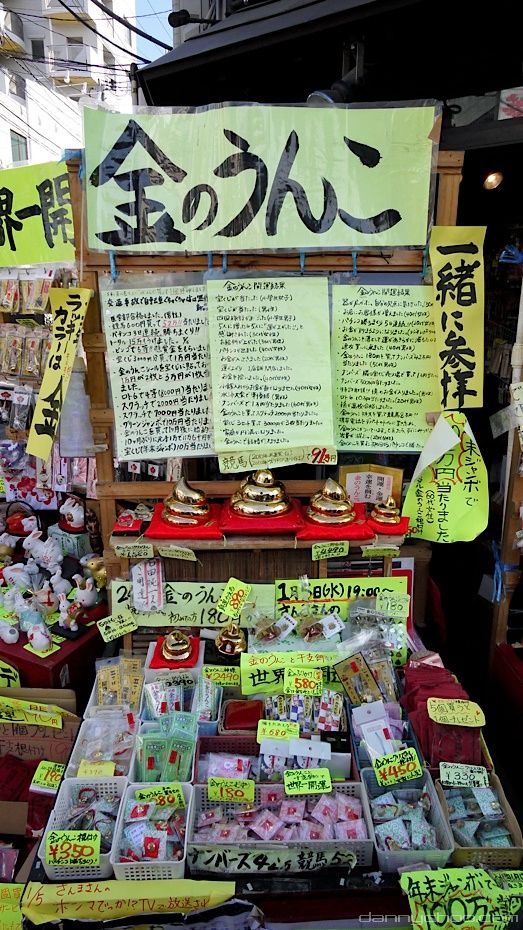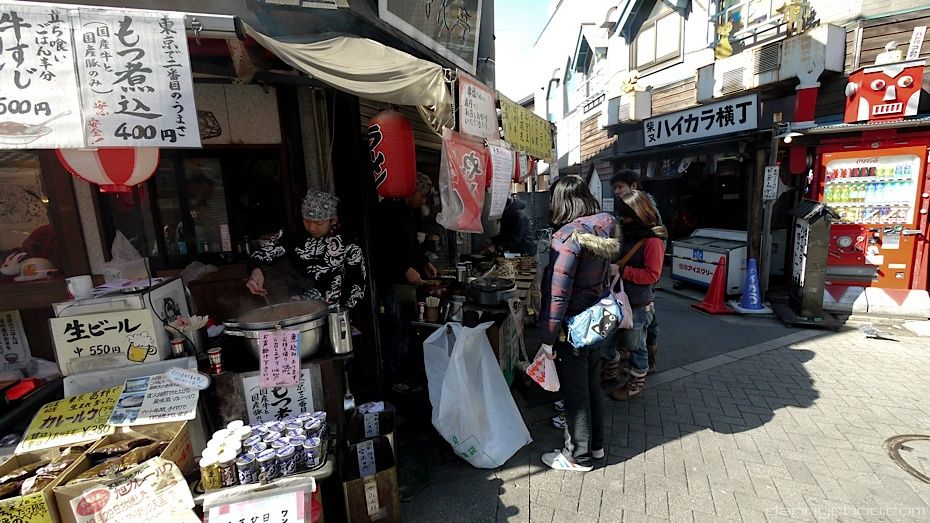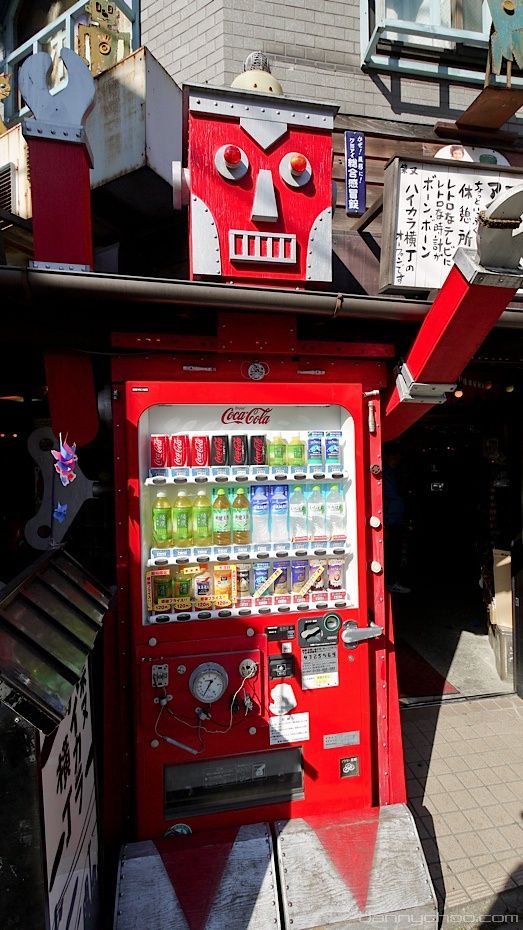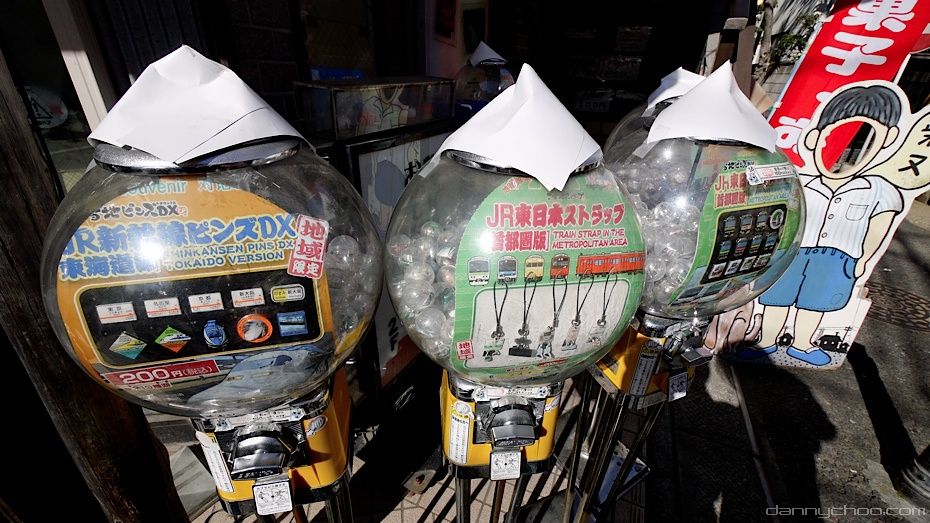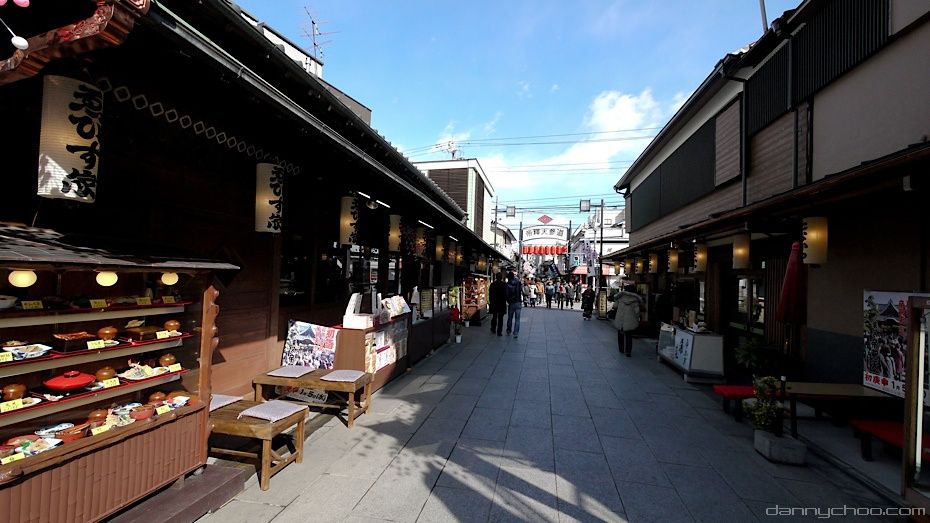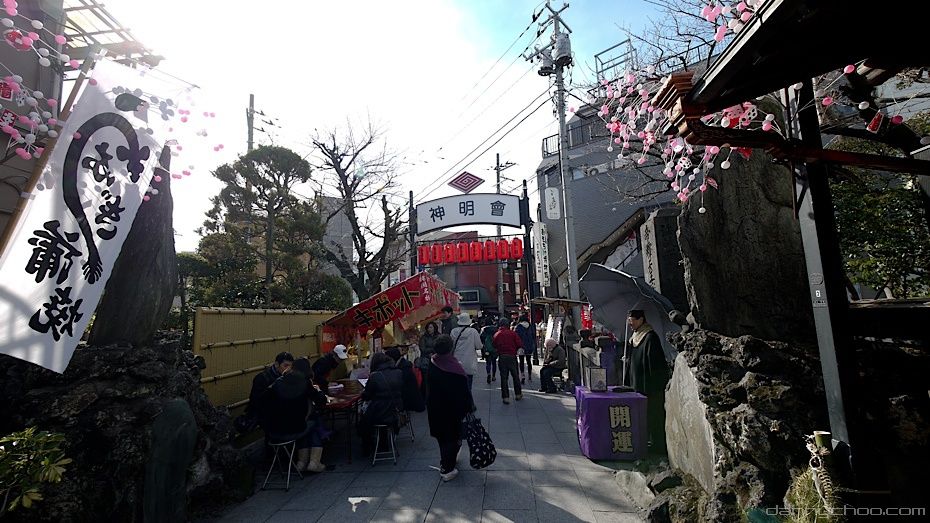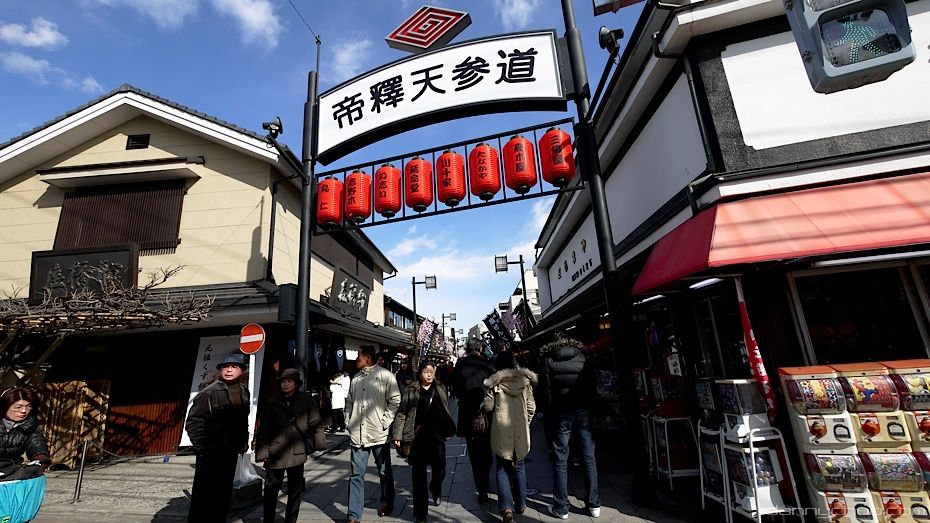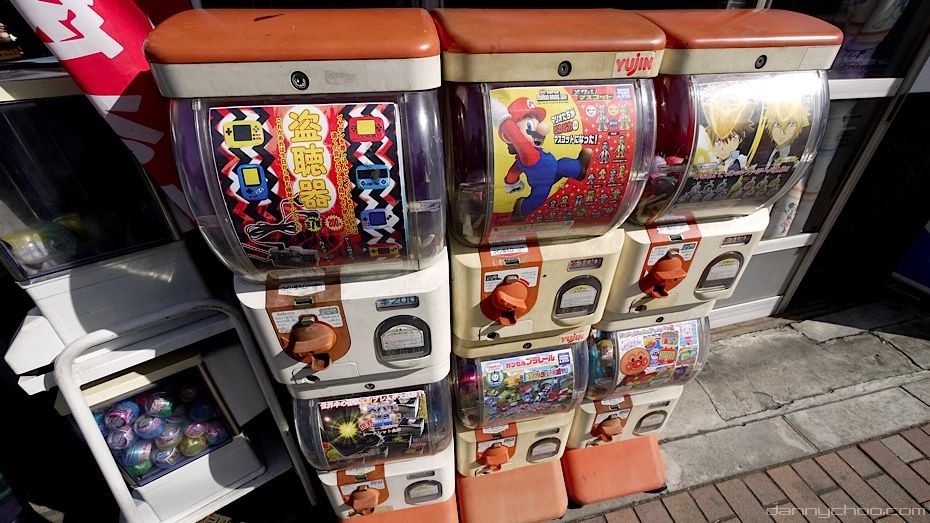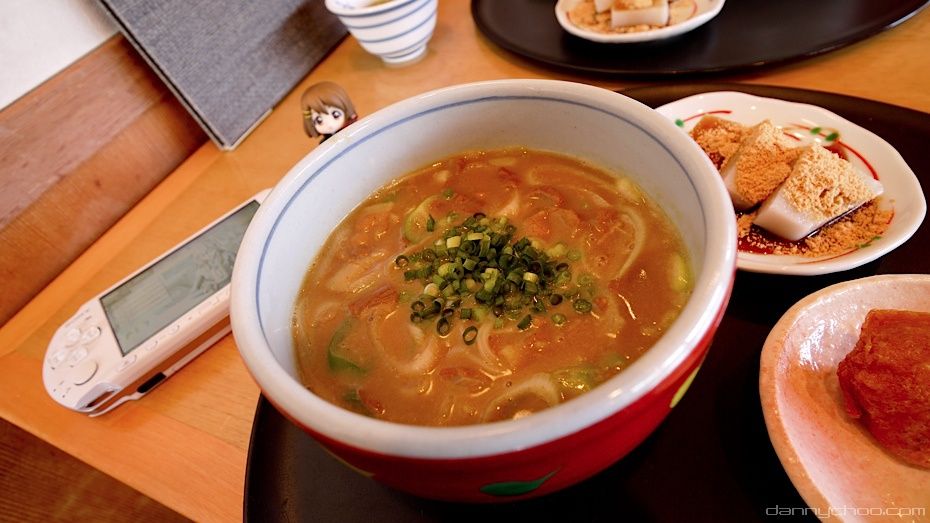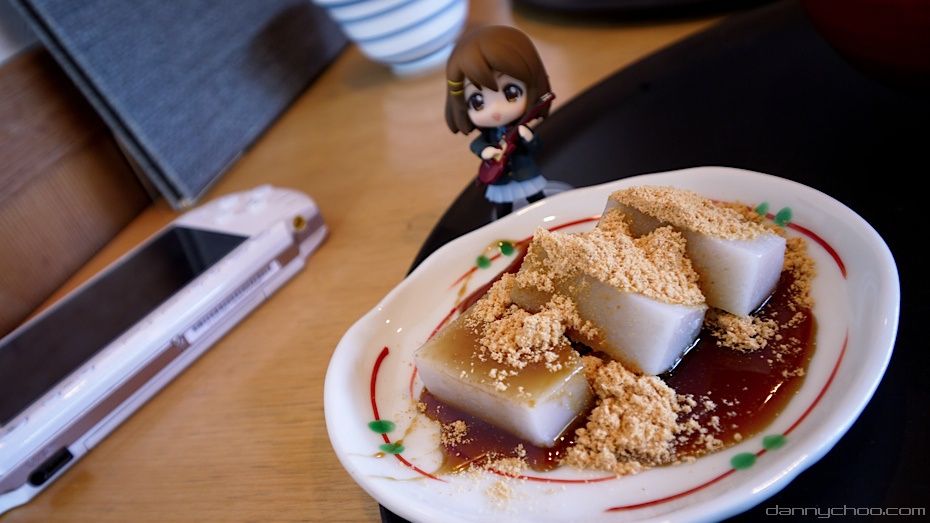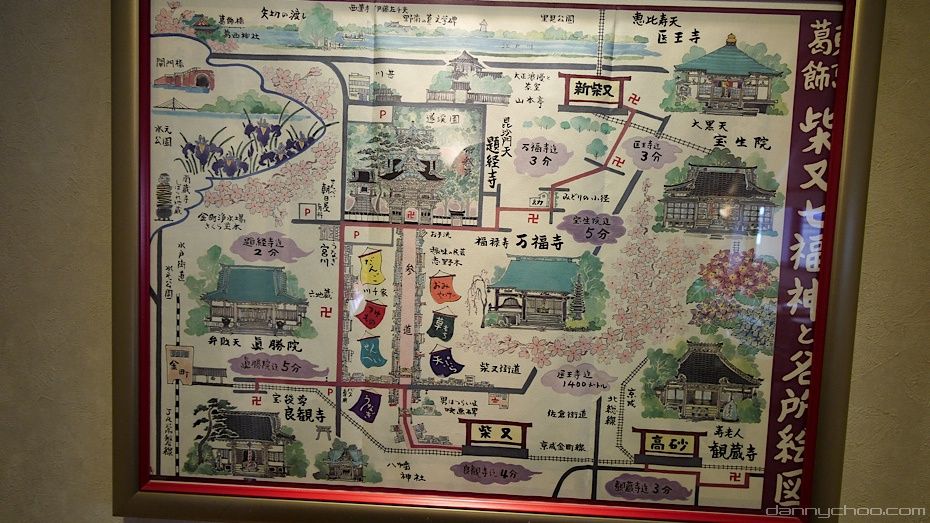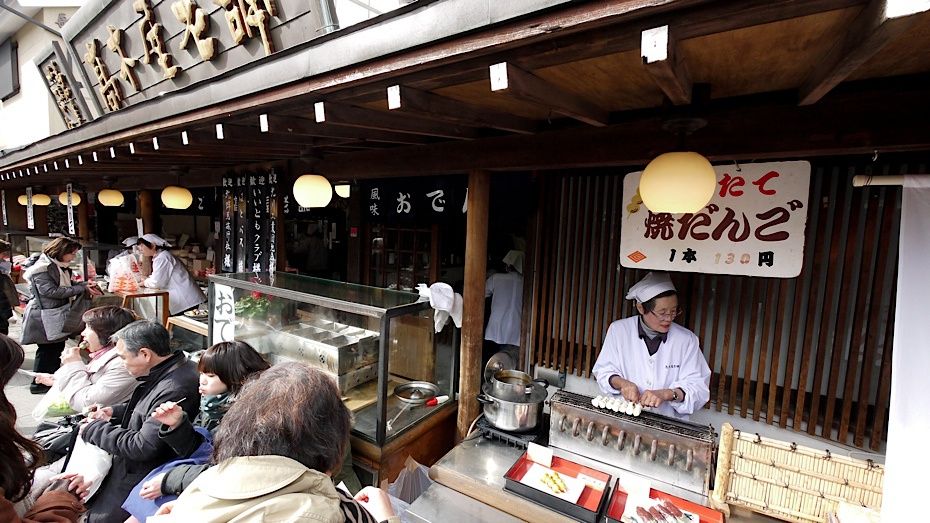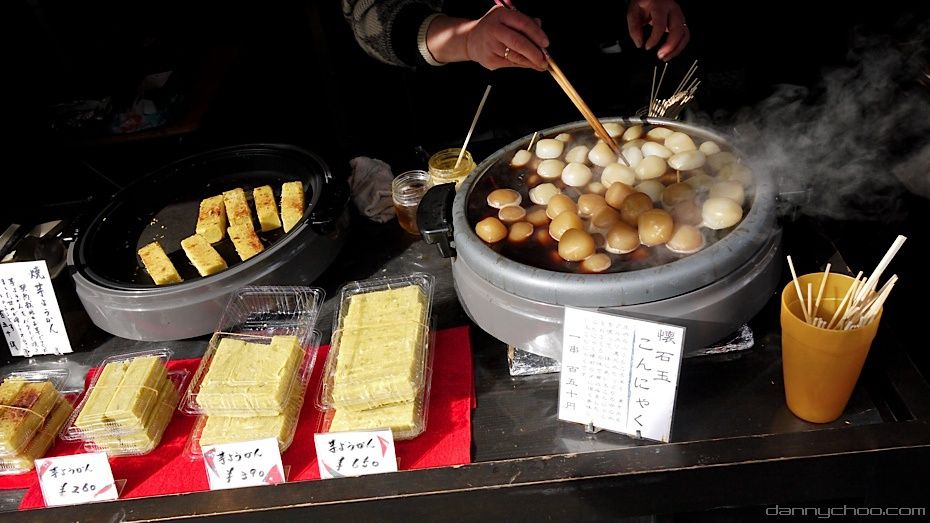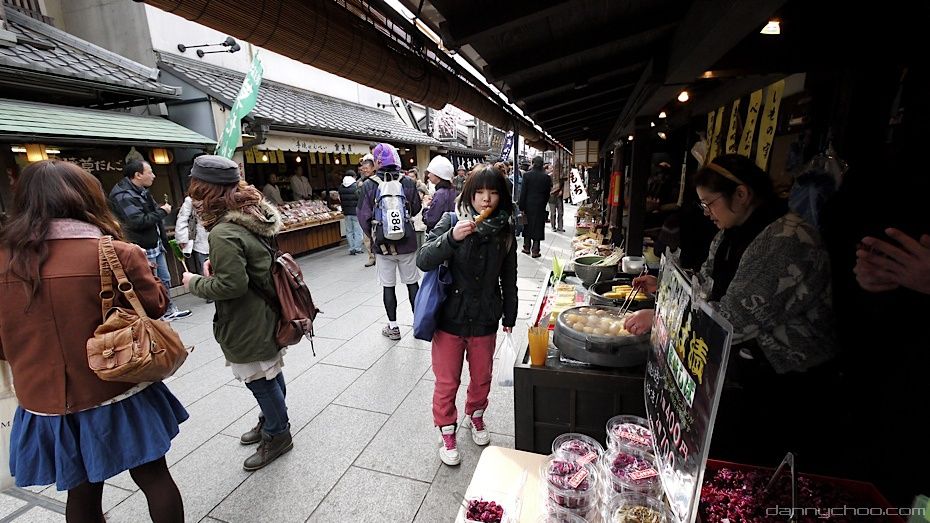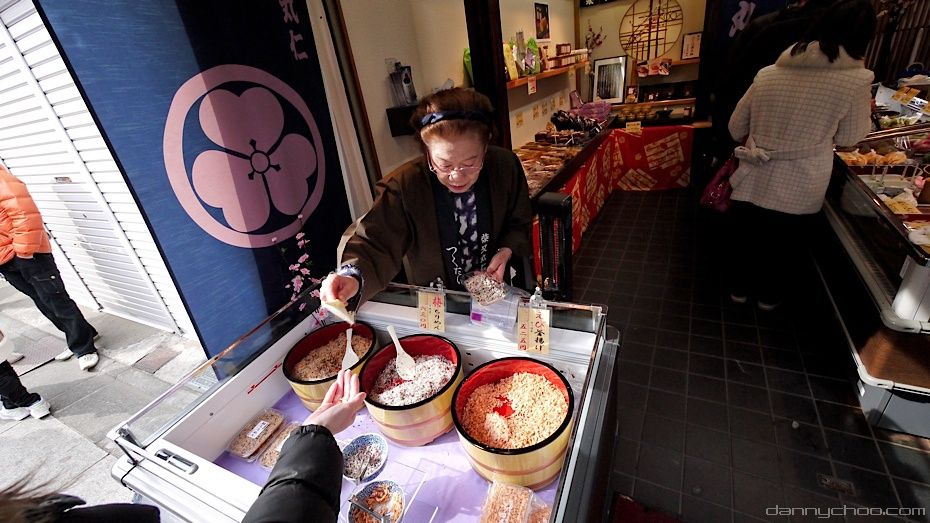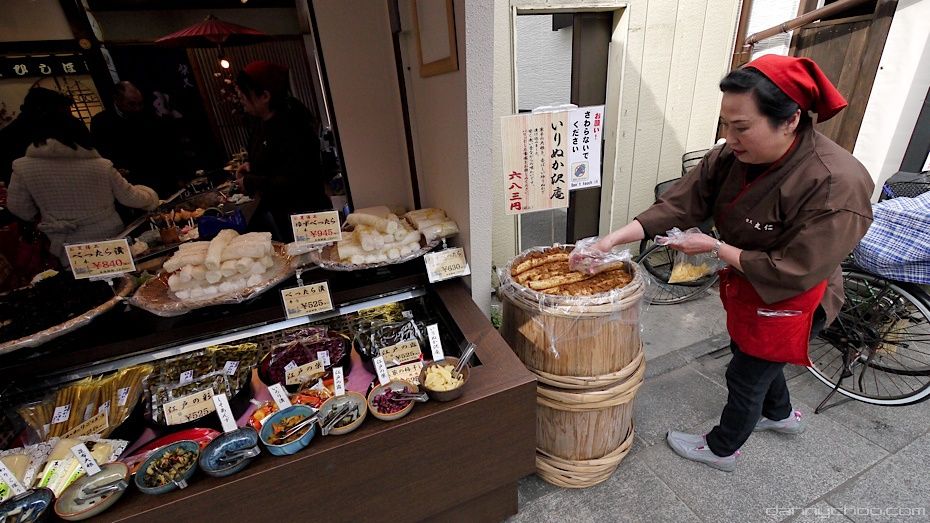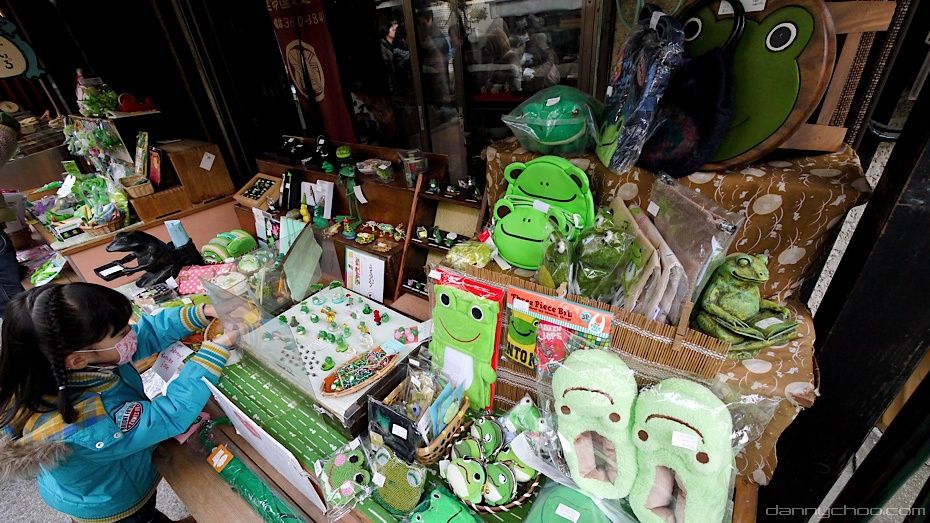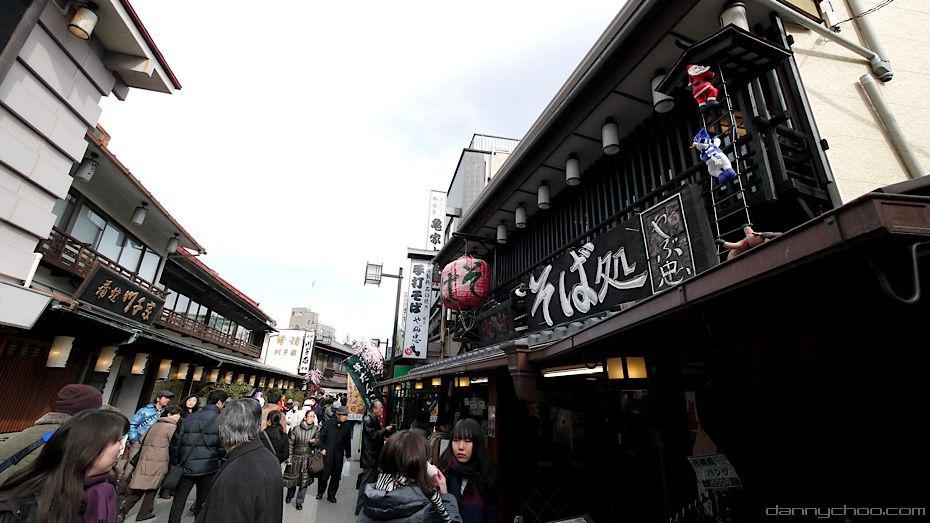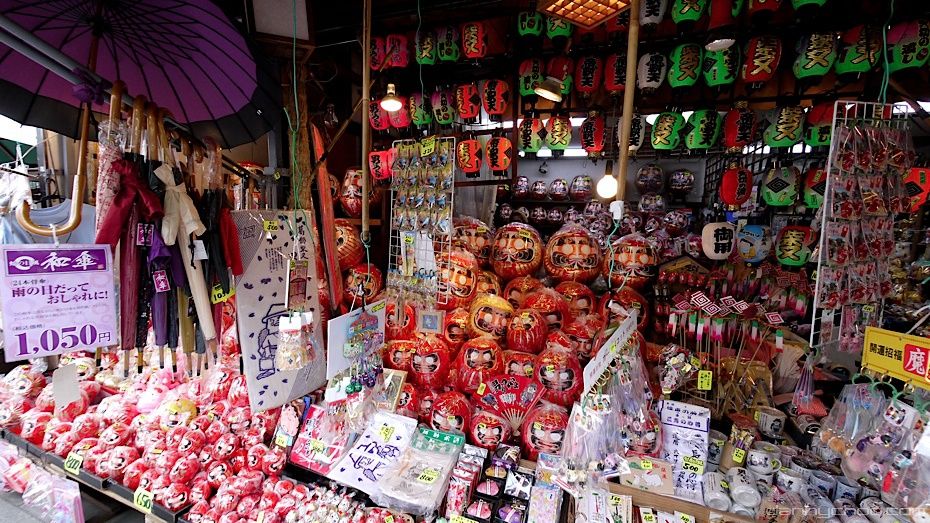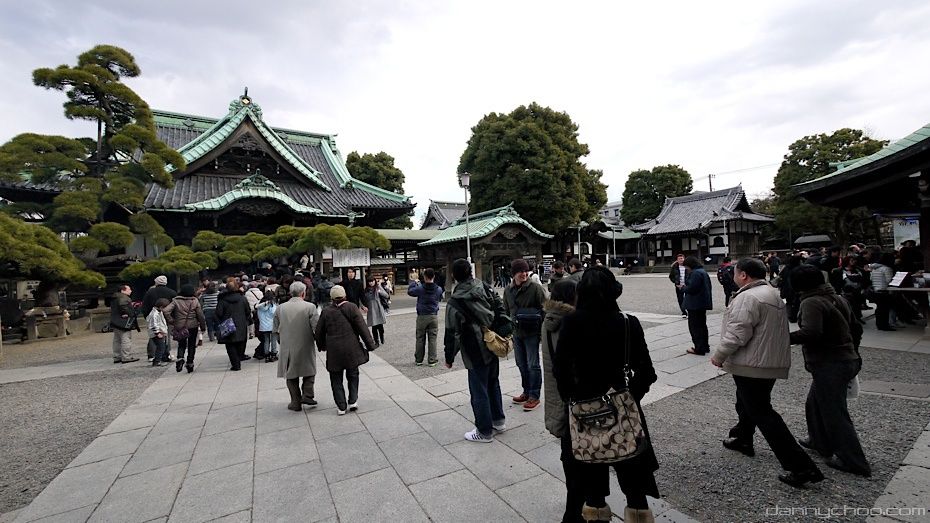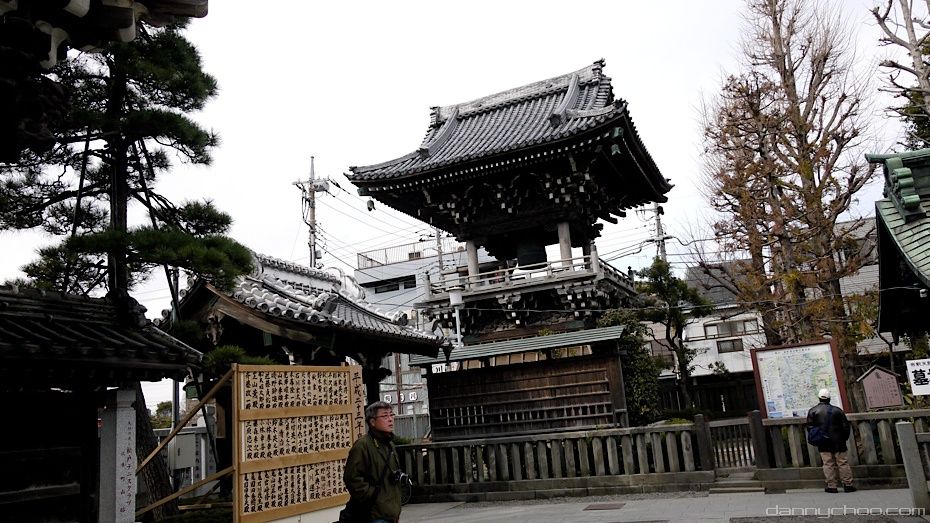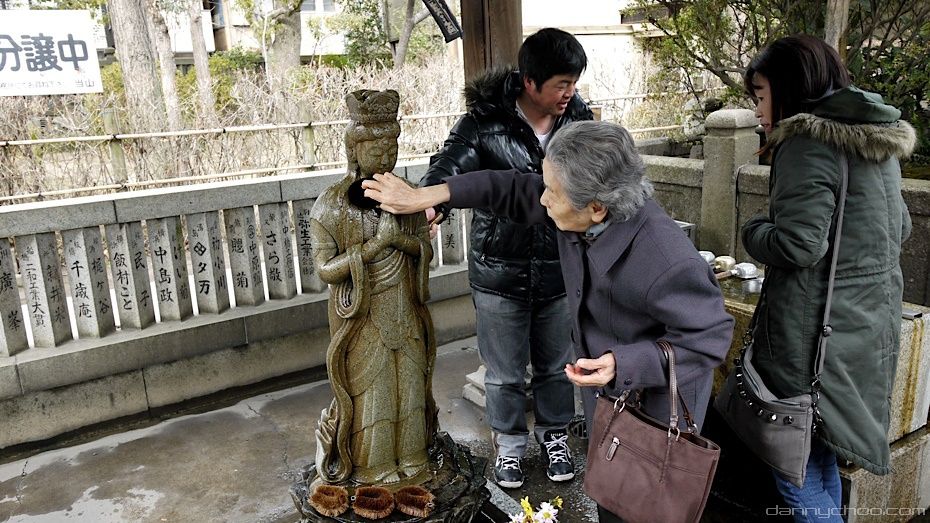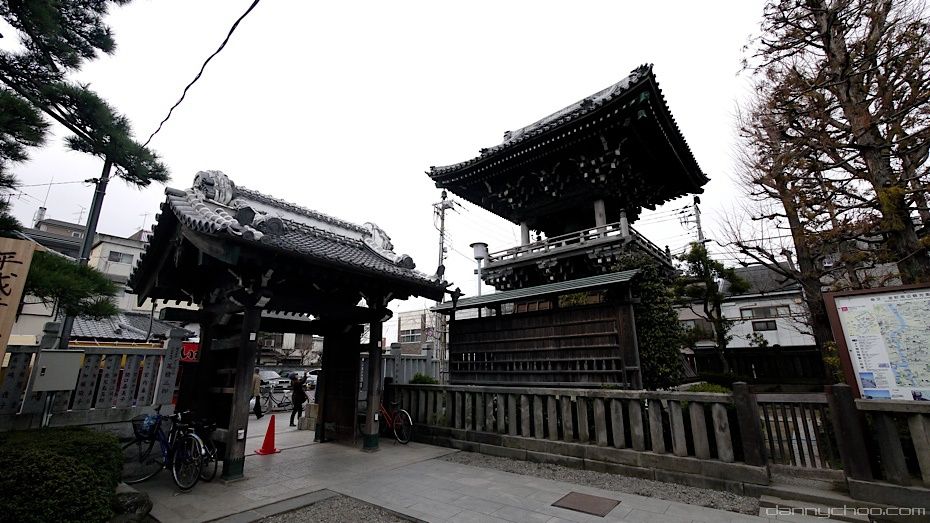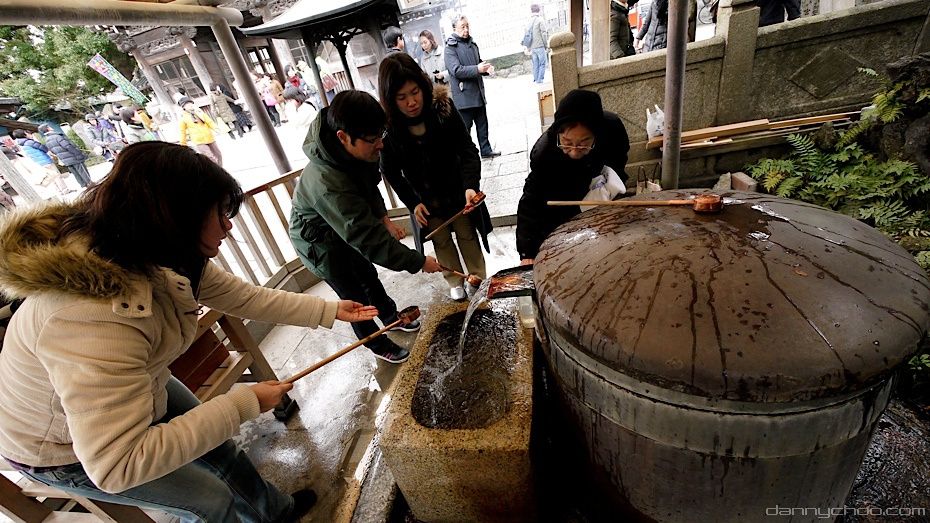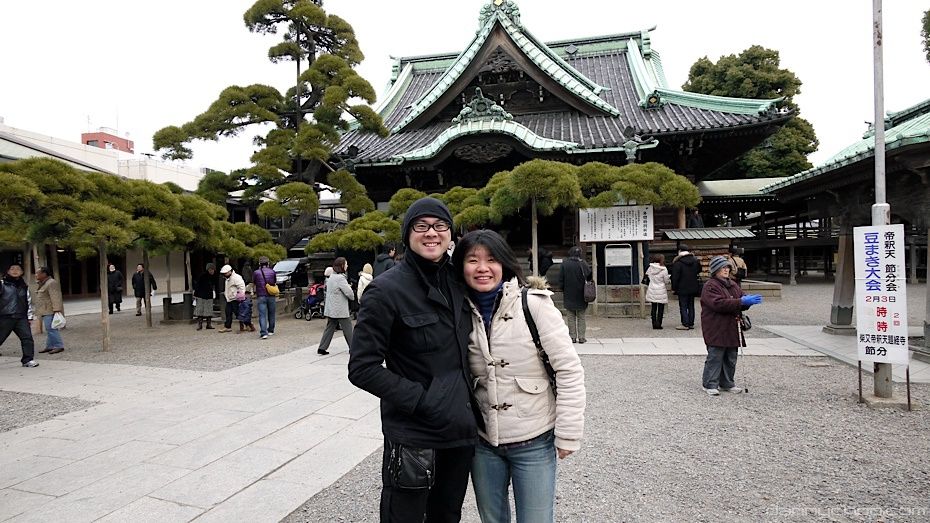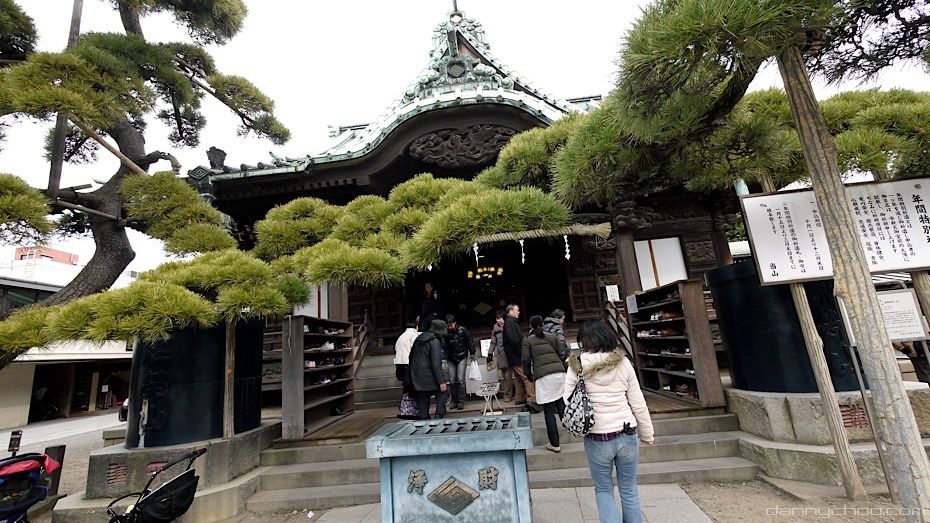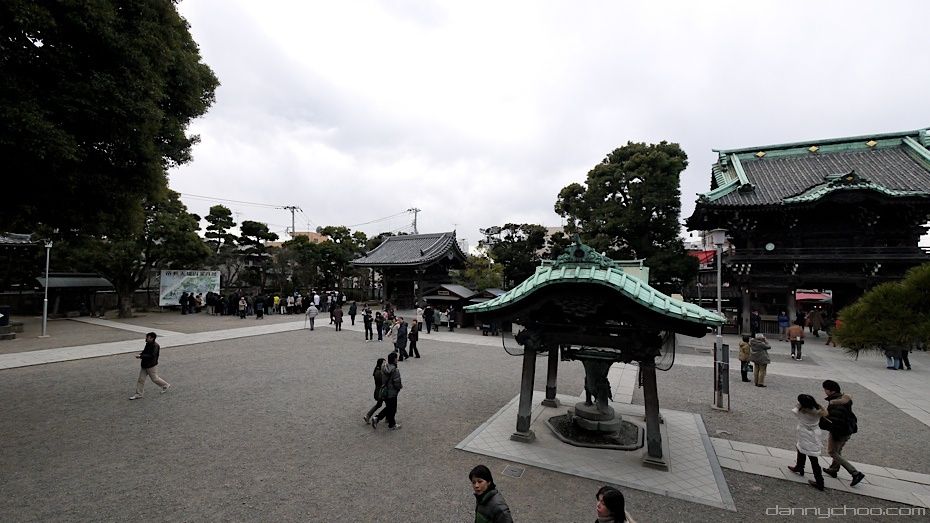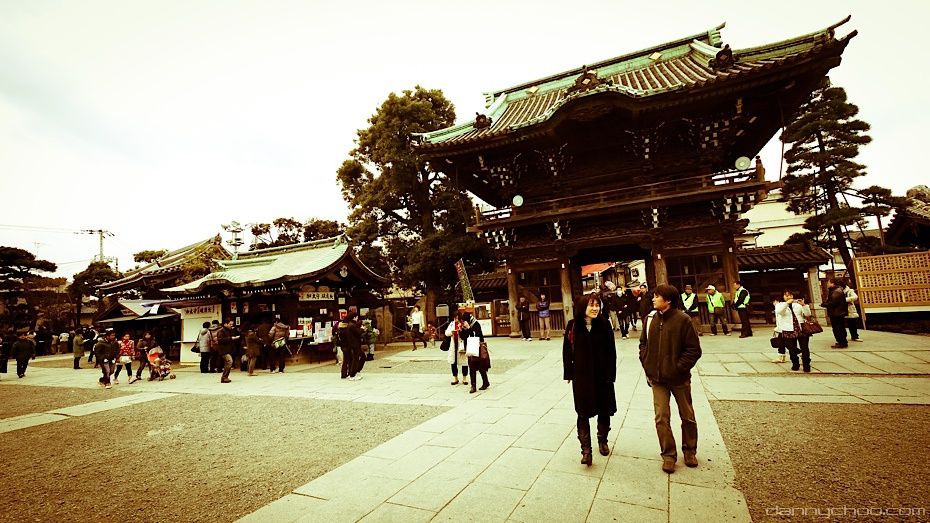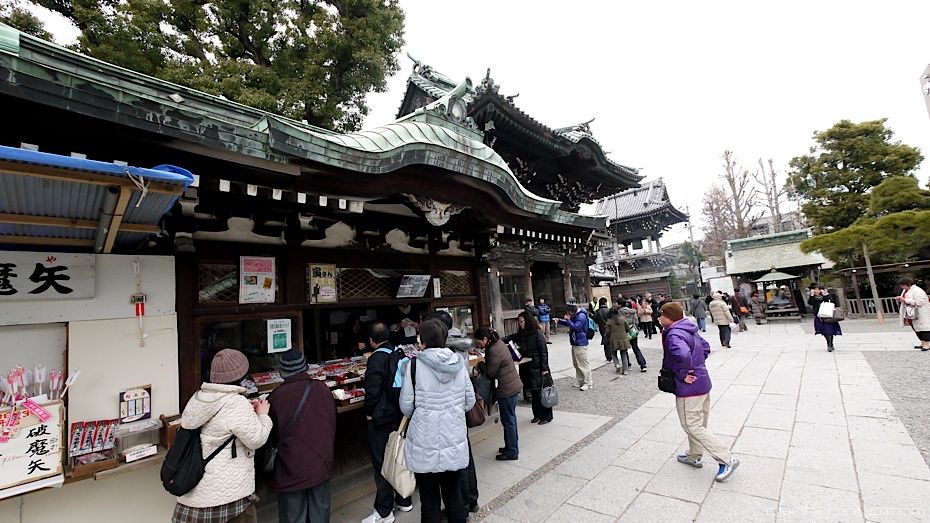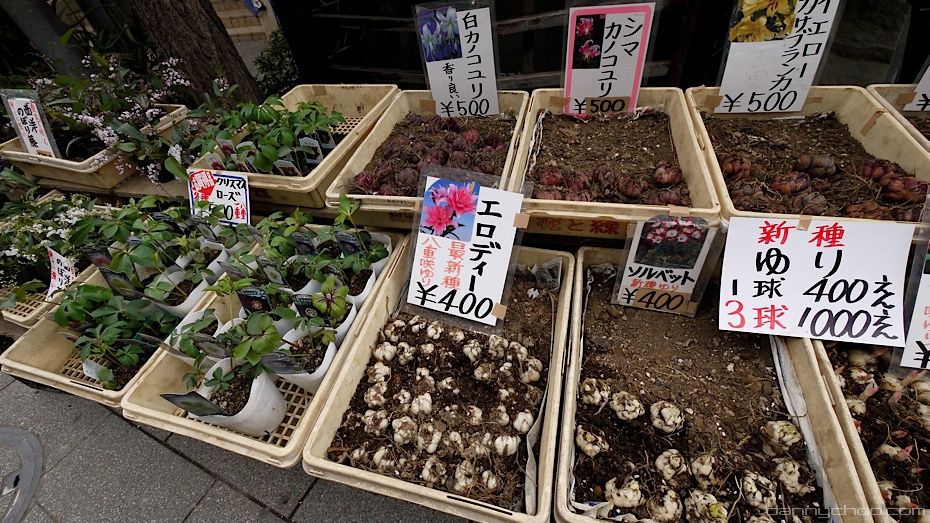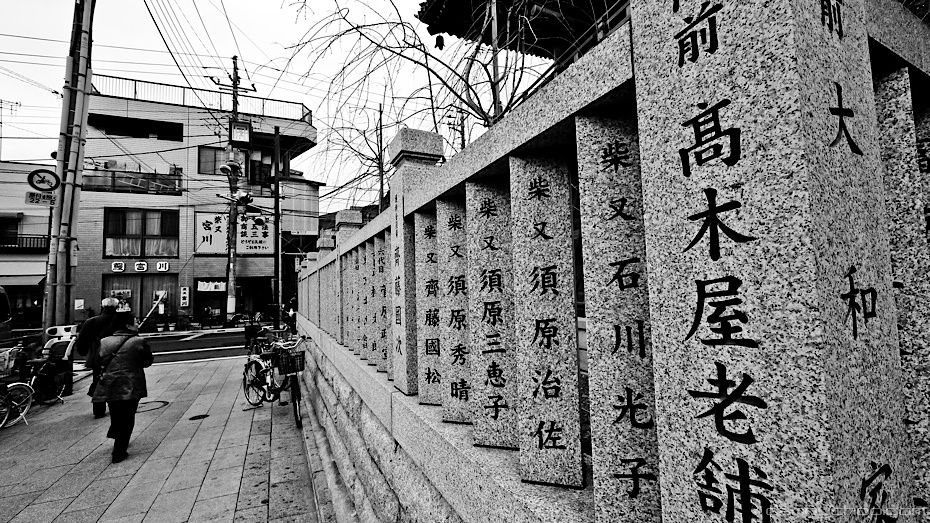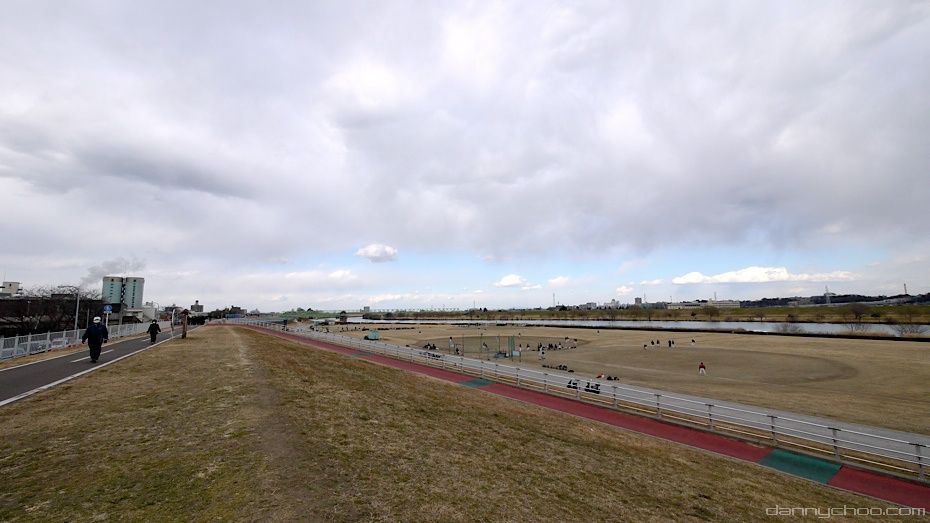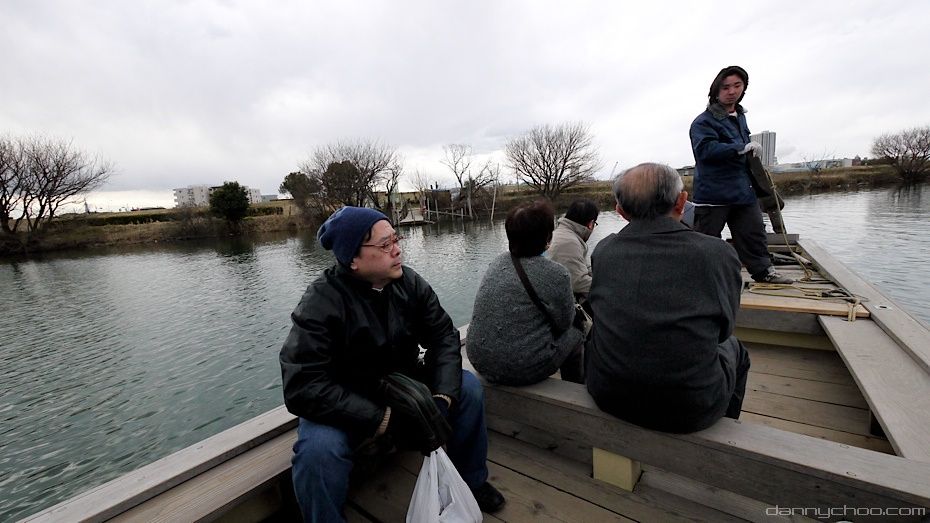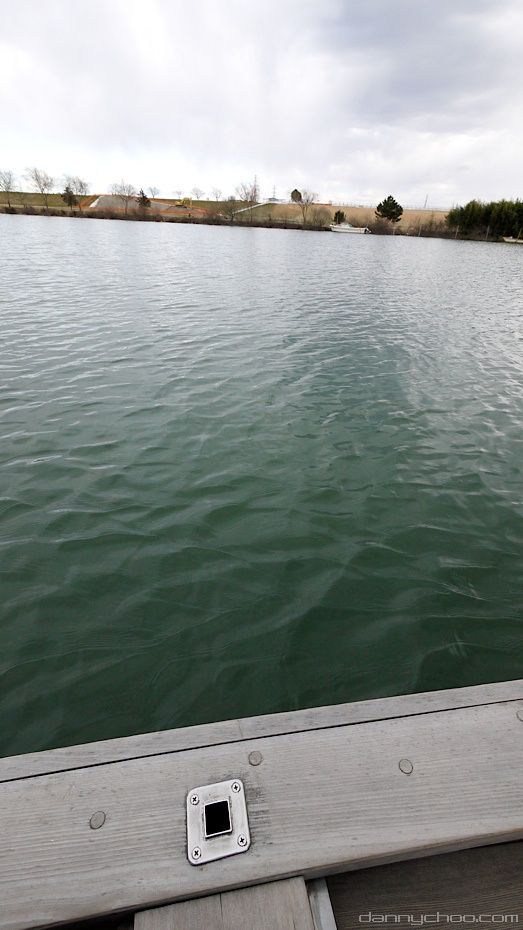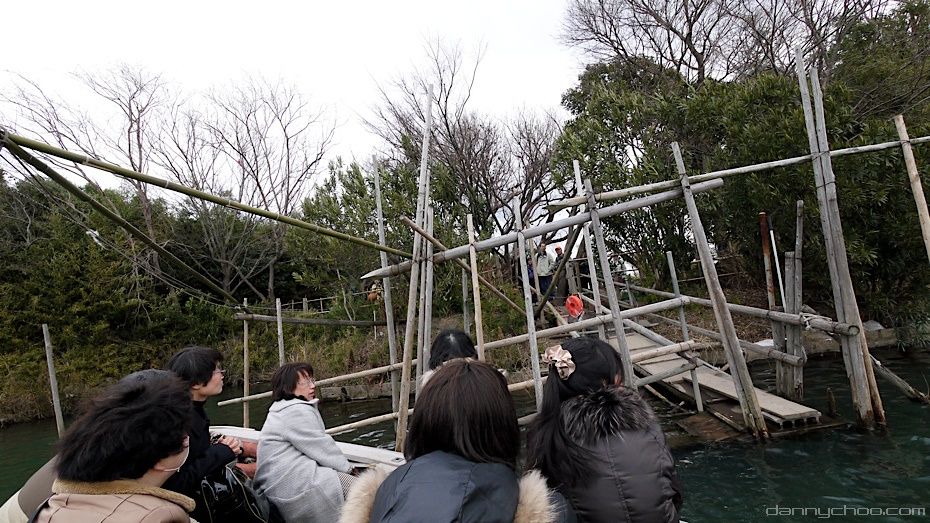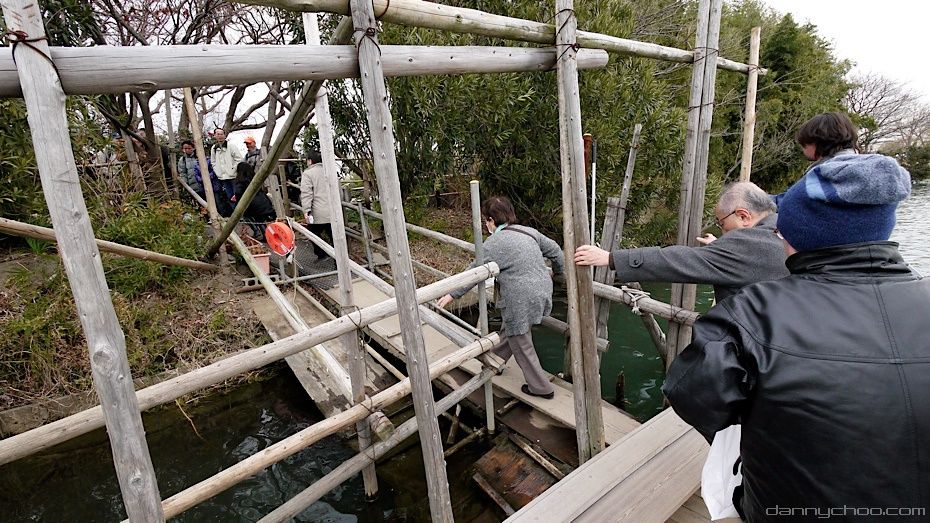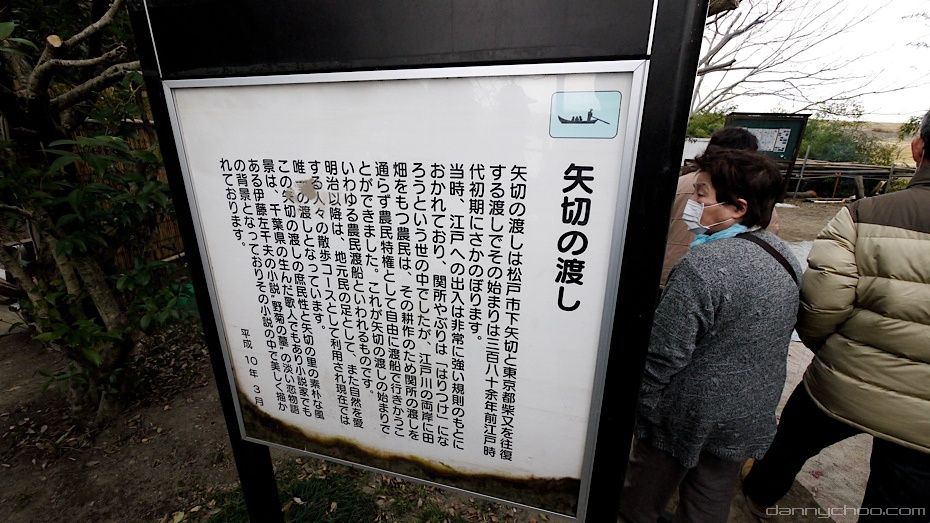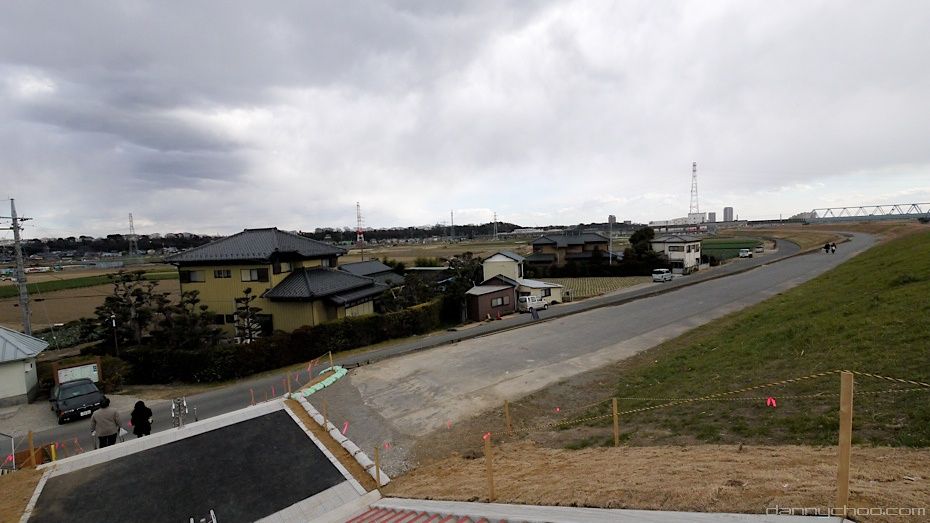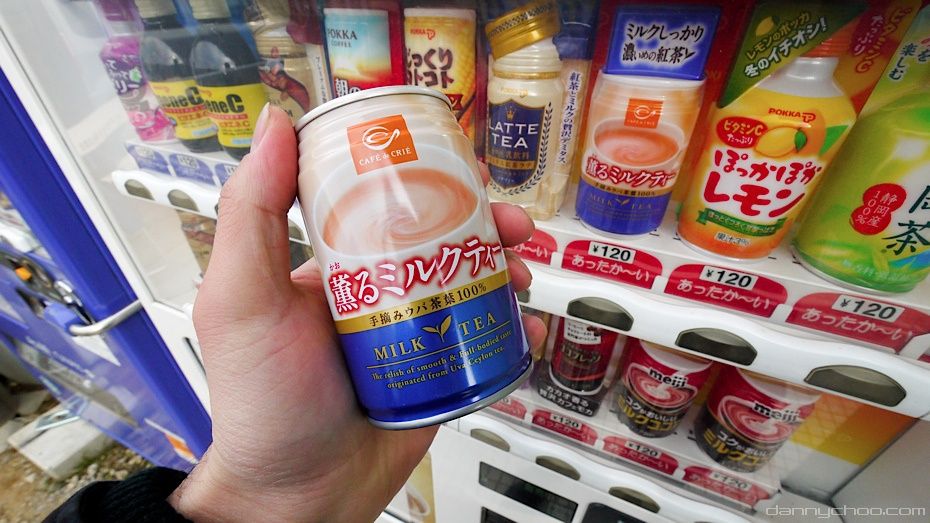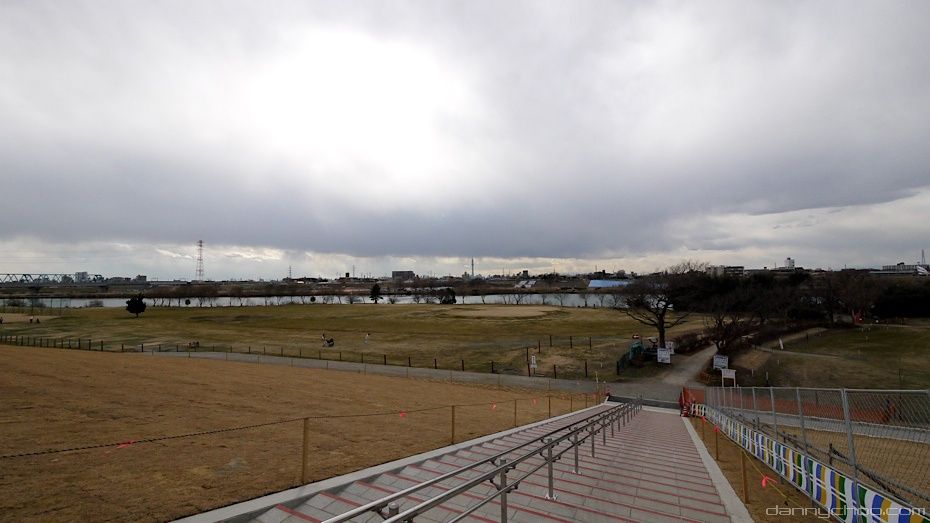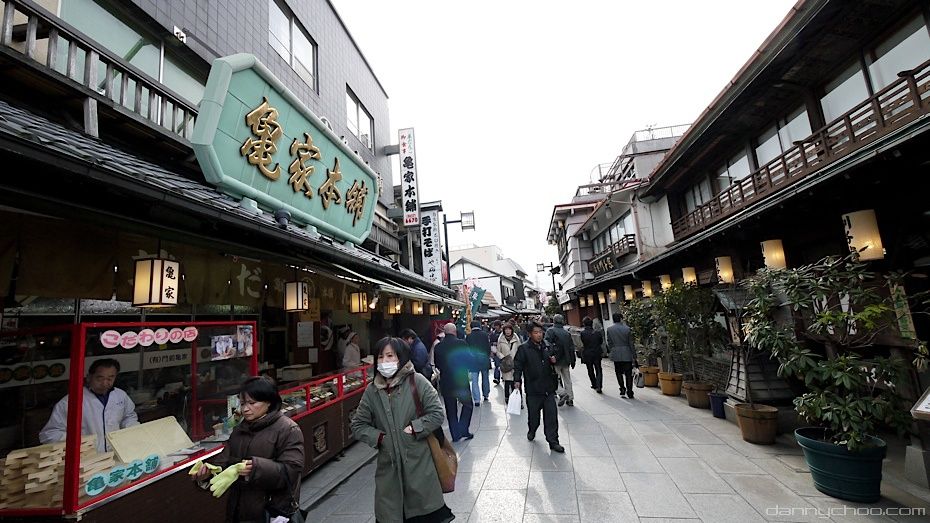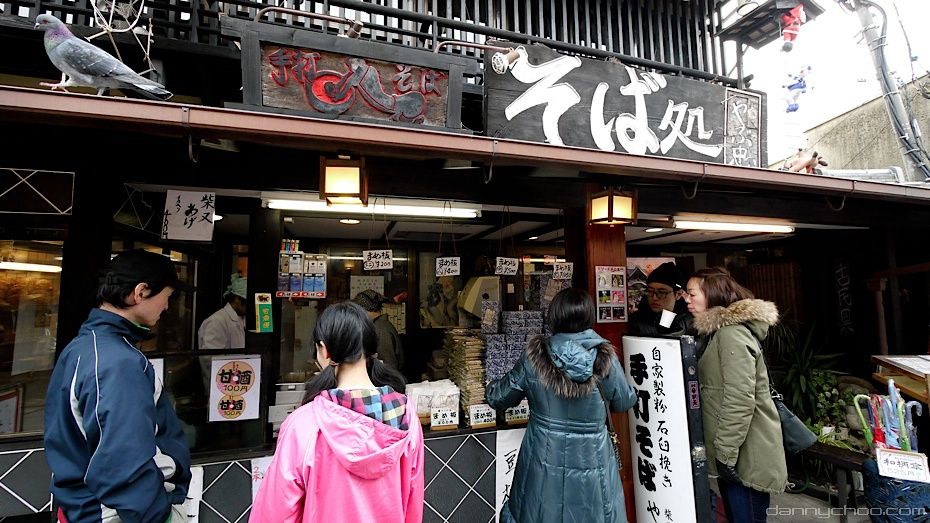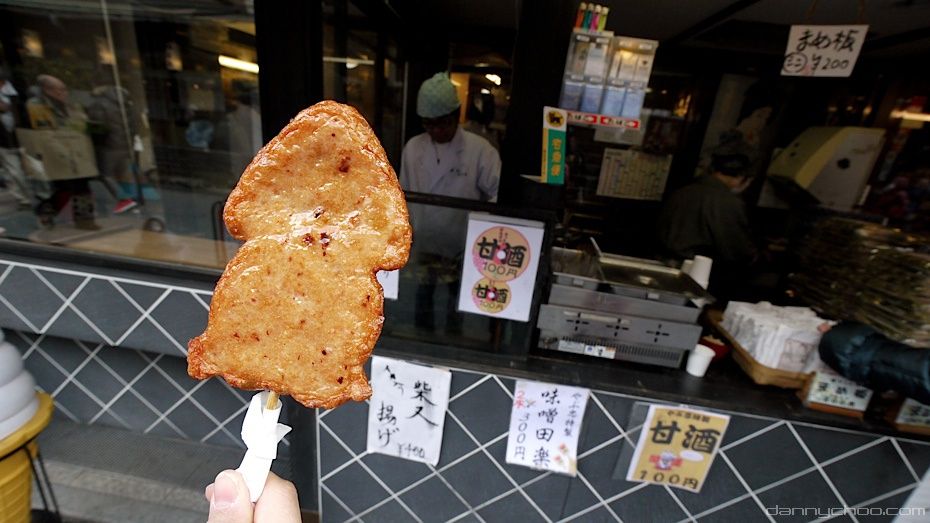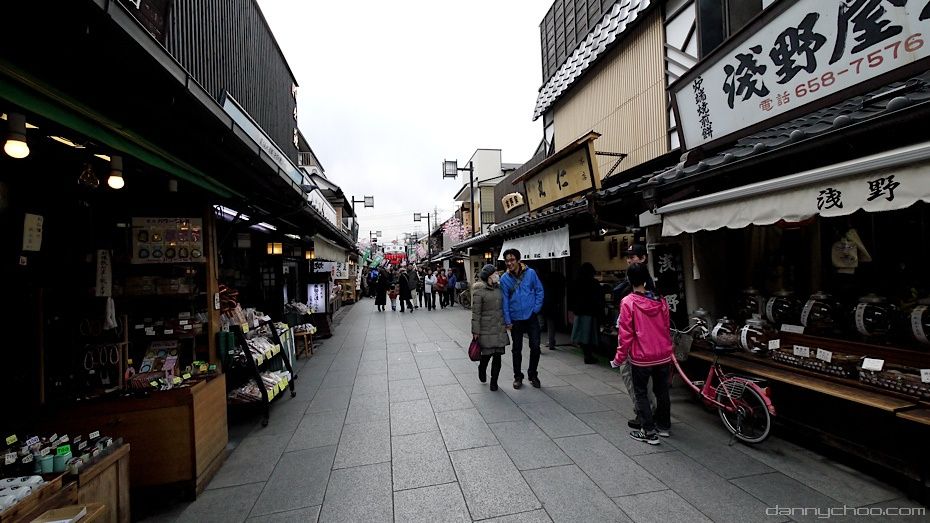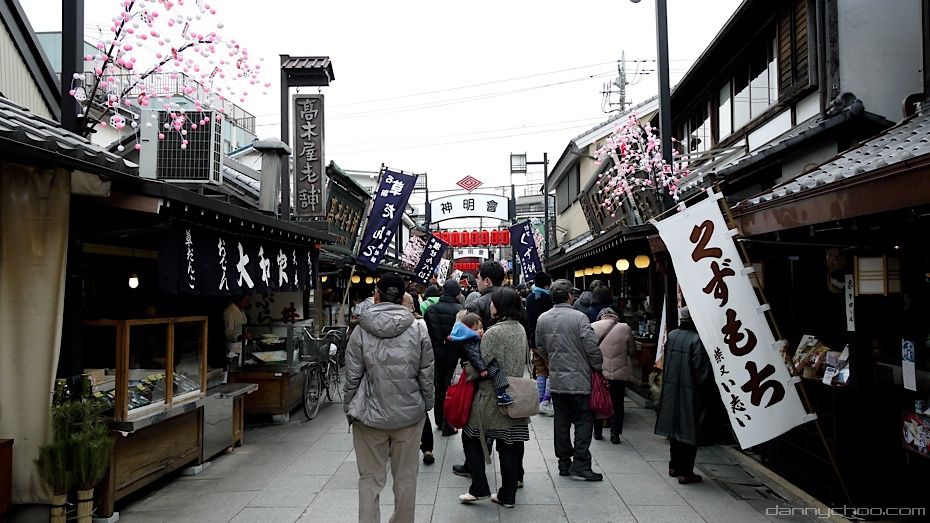Shibamata
There are still a few places left in Tokyo where you can get away from the hustle and bustle of the modern city and go to experience more of the traditional Edo side. Kawagoe is located outside of Tokyo but not too far away and then there is Asakusa. Only recently discovered another area in East Tokyo called Shibamata and went along one Sunday afternoon to check it out.
To get to Shibamata, take the Kanamachi line from Asakusa and get off at Shibamata station . The area you want to explore is right outside the station.
I love the train crossings which allow you to take photos like this.
You may want to go to Shibamata on an empty stomach as there are plenty of snacks to nibble on as soon as you step outside the station.
The bronze statue is of Tora-san who stars in the 1968 drama series that was aired on Fuji TV "Otoko wa tsurai yo" . Shibamata started to become more popular after the series started its broadcast.
One side of Shibamata has modern supermarkets and pachinko parlors while the other side has traditional Edo style buildings.
Outside the station are a few maps which you wont really need - save a tree and just follow the crowds instead.
Not much info about the "Golden poo" apart from that it endows you with good luck. Wonder why our daily poo no bring good luck?
I guess its best to have one of these in your pocket instead of a real one after a night of spicy food, corn and spinach.
To say "Poo" in Japanese you can use the words Unchi , Unko or the medical term is Otsuuji .
I guess its best to have one of these in your pocket instead of a real one after a night of spicy food, corn and spinach.
To say "Poo" in Japanese you can use the words Unchi , Unko or the medical term is Otsuuji .
After you have picked up some poo, you can then pick up some more food.
Which came first? Vending Machine Red or this?
Some train station goodies. The white paper on top is to prevent folks from opening the lid and taking handfuls without paying for them - in Japan this works well.
After following everybody for a while (don't follow too close - keep a distance and look away if looked at), you will end up in a pedestrianized road like this lined with traditional wooden buildings.
The chap standing in front of the purple table on the right of the photo will read your fortune. You can see these fortune tellers all over Tokyo - Shinjuku, Ginza and even in our local shopping arcade.
The pedestrianized road is called Taishakuten Sando and leads up to Shibamata Taishakuten Shrine.
Spotted some Gacha - the one on the top left has got eavesdropping devices which are called Touchouki .
First up its time to om nom on some lovely curry udon.
Some mochi sprinkled with kinako topping - a traditional Japanese sweet.
Map of the Shibamata area which has many shrines to explore.
Taishakuten Sando is filled with stalls like these that sell warm snacks to nibble on.
One of my fave foods - Konyaku.
There were lots of young ladies with SLRs out n about.
This shop sells pickles and other side dishes that one would eat with rice. This lady is handing out some samples of dried fish which tastes lovely when sprinkled on rice - a bit like Furikake.
The small dishes with tongs are samples which you can freely taste. Probably not a good idea to bring a long a bowl of rice while trying them all out though - or this lady will stab you in the gut with a pickle.
The store on the left of the photo has 7 digits for its telephone number. Telephone numbers became 8 digits in 1991 (not including the area code). Thanks to Twitter comrades for helping me with the answer ^^;
There is also a store for folks who have a frog fetish.
The red things are called "Daruma" which has the face of Bodhidharma painted on it. The eyes are blank for a reason - when setting a goal for yourself, you fill in one eye and when you complete the goal then you can fill in the other eye. They had small Dollfie sized ones which I forgot to pick up on the way back to the station ToT.
In the grounds of Taishakuten shrine which was founded way back in 1629.
In the shrine grounds, one will see this deity statue. What one should do first is purify one hands using the water on the side and then take a pail of the same water to pour over the statue.
Once that's done, take one of the brown scrubbing things (Tawashi) and give the statue a good scrub around the same area that you want your own body to be healed.
My turn with the pail of water.
I was diagnosed with spinal hernia a few years ago meaning that my lower back area is in constant pain. I need to rest one arm on my knee when bending over to prevent me from yelling out in pain ^^; Me give the statue a good scrub around the back.
Another well of purifying water.
A quick snap outside the main building before exploring more.
Outside many shrines one will usually see a box just like the blue one here. Stand in front of it, throw in a few coins (a 5 yen coin if possible), clap and then close your eyes and say a prayer. 5 yen in Japanese is pronounced "Go en" which is the same pronunciation as "ご縁" meaning "Good karma."
Many shrines will require you to take off your shoes, stilts, snorkeling or skiing footwear if you are wearing any.
However, walking around the shrine buildings without shoes made the biting cold feel worse ^^;
The shrine store that sells charms and amulets which bring good luck and ward off evil. More about charms and amulets in the Japanese New Year post.
Found a flower called Ero-dee.
Time to explore the rest of the Shibamata area.
Some food stalls here which one would typically find during Autumn or Winter festivals.
After walking for a bit we come across Edogawa River which has huge fields on each side - just like the ones you see in anime.
Part of Edogawa River is called Yakiri and one can take a small ferry boat that crosses the river which is called "Yakiri no Watashi" . The boat is manually powered and costs 100 yen per person.
The ride is silent apart from the sound of water hitting the sides of the boat. Peaceful and calm.
The other end of the river in sight. The Yakiri no Watashi has been operating like this for hundreds of years since the Edo period and its nice that they kept the tradition going. it only takes a few minutes to get to the other side.
Probably wont pass any safety standards but this is what it was like back then and I love how they kept it the same.
The last time you done the Japanese to English test was from raw text which one could have copy/pasted into a dictionary - this is the final test before I contact you for part time work - translate this into English.
At this time of year there is not particularly a lot going on that visitors may find interesting. The locals however are enjoying some frisbee, baseball, jogging, football or badminton in the large fields which are free for anybody to use.
One of the things I love about Japanese vending machines is that they have hot drinks - the can alone will warm you up just by holding it in yer hands.
Convenient stores also sell hot drinks like this but the ones in the vending machines tend to be warmer. 120 yen.
Convenient stores also sell hot drinks like this but the ones in the vending machines tend to be warmer. 120 yen.
Soon became overcast. Tokyo Skytree visible in the background - probably be visible from all around Tokyo.
Heading back to the station.
When picking up some snacks, be careful of the pigeons which may decide to drop a parcel on your food - would be an interesting experience if some pigeon droppings landed on your snack and you took a bite without looking.
At first this looked like a fried frog - tis actually some squid.
Shibamata is a great place to spend a peaceful afternoon to enjoy more of the traditional Japan - much recommended.
More places to visit in Tokyo and other parts of Japan listed up below.
More places to visit in Tokyo and other parts of Japan listed up below.
